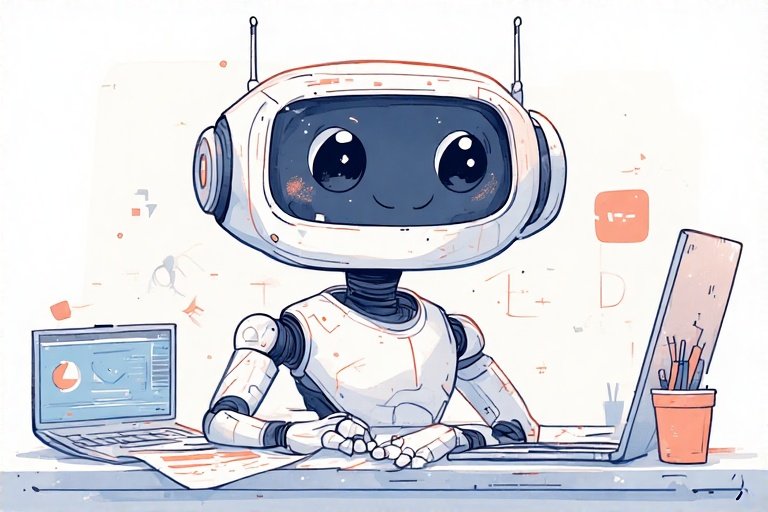Everyone is talking about artificial intelligence, but most articles stop at the buzzwords. This post is different. Below you will find three concrete examples of AI projects that are already delivering measurable value for real companies. You will also find a practical framework you can use to decide where AI fits in your own organisation.
1. Predictive Maintenance in Manufacturing
Problem
A mid-size manufacturer was losing money every month because critical machines failed without warning. Each unplanned stoppage cost tens of thousands of dollars in lost output, overtime labour, and emergency parts.
Solution
We started with one high-impact production line. Sensors were already streaming temperature, vibration, and current-draw data, but nobody was looking at it in real time. We built a lightweight machine-learning model that learns the “normal” behaviour of each machine and fires an alert when patterns drift outside safe limits. The model is retrained weekly with fresh data, so its accuracy keeps improving.
Result
- Average notice period before a failure: 72 hours
- Unplanned downtime on the pilot line: down 40 percent in six months
- Payback period: under four months
Key takeaway: You do not need a fleet of data scientists or a seven-figure budget. Start with one critical asset, collect the data you already have, and prove the concept quickly.
2. Customer Service Automation for an Insurance Provider
Problem
Policyholders were waiting up to two days for simple claim-status updates. Agents spent most of their day repeating the same answers to routine questions.
Solution
We trained a natural-language model on two years of historical chat transcripts and policy documents. The AI now handles “Where is my claim?” and “What documents do I need?” style questions instantly. When a query falls outside its scope, the system hands the conversation to a human agent with full context.
Result
- Average response time: 48 hours → 8 minutes
- Agent workload for routine questions: down 65 percent
- Customer satisfaction (CSAT): up 22 percent in three months
Key takeaway: Automation works best when it augments your team instead of replacing it. Freed from repetitive tasks, agents now focus on complex claims that require empathy and negotiation—work humans still do better than machines.
3. Real-Time Fraud Detection at a Regional Bank
Problem
The bank’s rule-based fraud engine was generating too many false positives. Legitimate customers were having cards declined, while some real fraud slipped through.
Solution
We deployed an anomaly-detection algorithm that scores every transaction in milliseconds. The model looks at hundreds of features—amount, merchant category, device fingerprint, historical spending patterns—and flags only the transactions that truly deviate from a customer’s normal behaviour.
Result
- False-positive rate: down 60 percent
- Real fraud caught: up 18 percent
- Operational cost of manual reviews: down 30 percent
Key takeaway: Fraud patterns evolve quickly. A model that retrains itself daily keeps pace with new attack vectors far better than a static rules engine.
How to Pick Your First AI Project
The three stories above look different on the surface, but they follow the same playbook:
- Define a clear problem with a quantifiable cost.
“We lose money every time line 3 goes down” is better than “We want AI.” - Check the data.
Do you already collect the information you need? If not, can you start collecting it tomorrow without a major capital project? - Choose a contained scope.
One production line, one call-centre queue, or one fraud category is enough to prove value. - Measure before and after.
If you cannot articulate the current baseline (downtime hours, average handle time, false-positive rate), you will never know whether the AI is working. - Plan for humans in the loop.
AI should remove drudgery, not responsibility. Make sure employees understand how the system helps them do more meaningful work.
Next Steps
If you are wondering which single problem to tackle first, start with a quick audit:
- What repetitive task consumes the most staff hours?
- Where do small errors create outsized costs?
- Which decisions happen dozens of times per day but follow predictable rules?
Answer those questions honestly, and you will have a shortlist of high-impact AI use cases—none of which require a moonshot budget.
Need help turning the shortlist into a pilot plan? Get in touch with the ATBIX team. We will map your data sources, estimate ROI, and design a six-week proof of concept that delivers numbers your CFO will love.
Bottom line: AI is not magic. It is a focused tool that pays off when you start small, measure relentlessly, and keep humans at the centre of the process.

